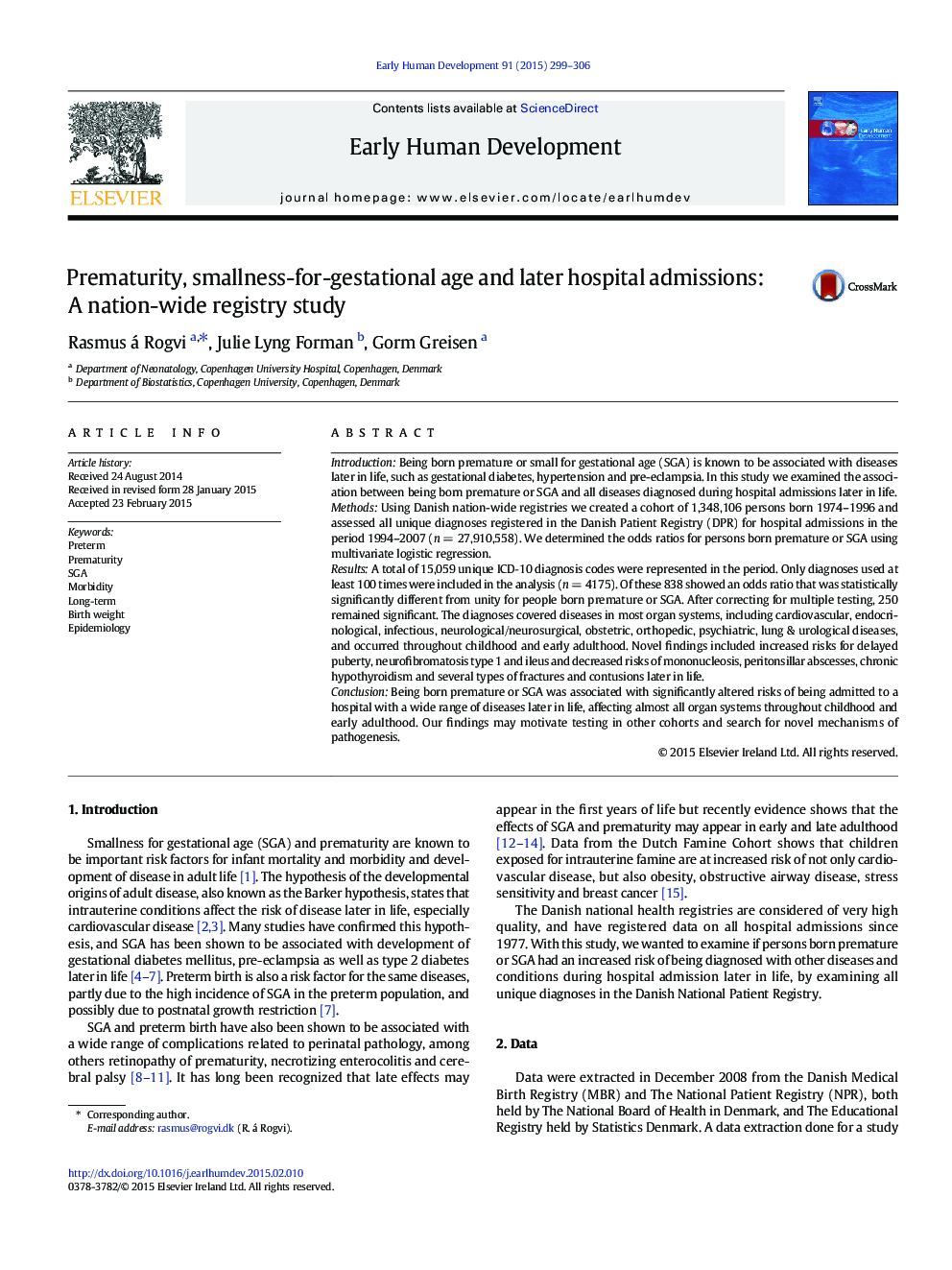| Article ID | Journal | Published Year | Pages | File Type |
|---|---|---|---|---|
| 3917881 | Early Human Development | 2015 | 8 Pages |
•Pre- and perinatal conditions affect disease later in life.•Using nationwide registries we examined altered disease patterns.•Children born small/premature showed altered risk of disease.•These changes were seen throughout childhood and early adult life.•Disease patterns were altered in many organ systems.
IntroductionBeing born premature or small for gestational age (SGA) is known to be associated with diseases later in life, such as gestational diabetes, hypertension and pre-eclampsia. In this study we examined the association between being born premature or SGA and all diseases diagnosed during hospital admissions later in life.MethodsUsing Danish nation-wide registries we created a cohort of 1,348,106 persons born 1974–1996 and assessed all unique diagnoses registered in the Danish Patient Registry (DPR) for hospital admissions in the period 1994–2007 (n = 27,910,558). We determined the odds ratios for persons born premature or SGA using multivariate logistic regression.ResultsA total of 15,059 unique ICD‐10 diagnosis codes were represented in the period. Only diagnoses used at least 100 times were included in the analysis (n = 4175). Of these 838 showed an odds ratio that was statistically significantly different from unity for people born premature or SGA. After correcting for multiple testing, 250 remained significant. The diagnoses covered diseases in most organ systems, including cardiovascular, endocrinological, infectious, neurological/neurosurgical, obstetric, orthopedic, psychiatric, lung & urological diseases, and occurred throughout childhood and early adulthood. Novel findings included increased risks for delayed puberty, neurofibromatosis type 1 and ileus and decreased risks of mononucleosis, peritonsillar abscesses, chronic hypothyroidism and several types of fractures and contusions later in life.ConclusionBeing born premature or SGA was associated with significantly altered risks of being admitted to a hospital with a wide range of diseases later in life, affecting almost all organ systems throughout childhood and early adulthood. Our findings may motivate testing in other cohorts and search for novel mechanisms of pathogenesis.
